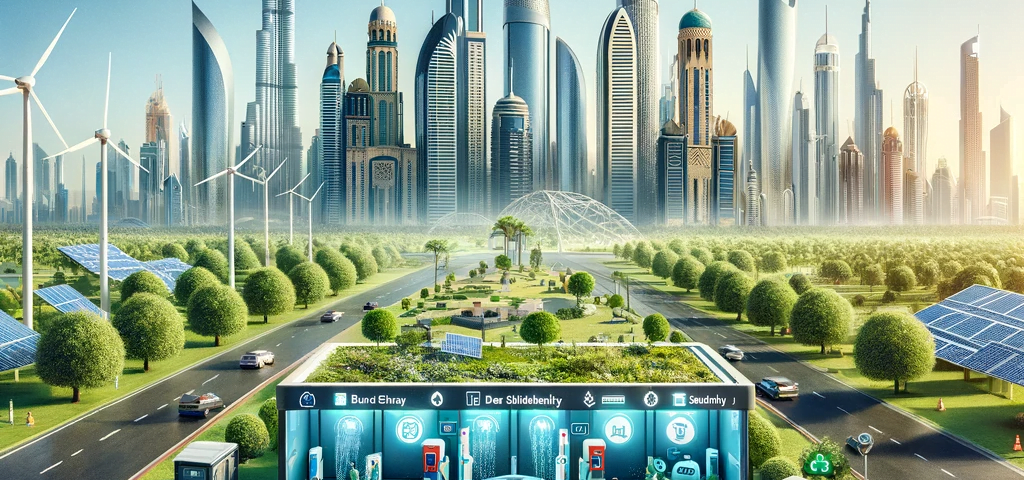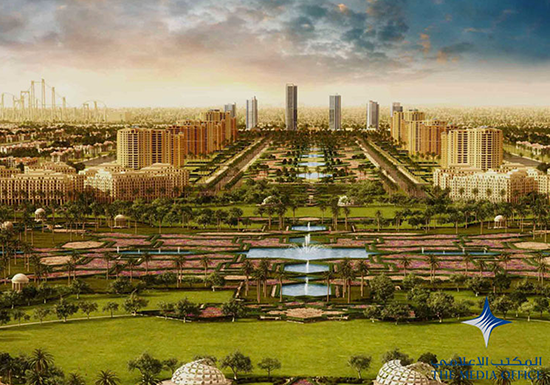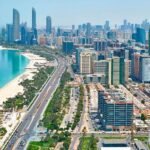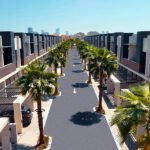Now Reading: UAE Carbon-Neutral Communities: What You Need to Know
-
01
UAE Carbon-Neutral Communities: What You Need to Know
UAE Carbon-Neutral Communities: What You Need to Know

UAE carbon-neutral communities are reshaping the country’s residential real estate landscape. As sustainability becomes a priority, these communities are designed to reduce carbon emissions, promote green living, and integrate eco-friendly technologies into everyday life.
In this article, we explore the concept of carbon-neutral communities, the developments leading the UAE’s sustainable real estate movement, the lifestyle and investment benefits, and why these projects are attracting both residents and investors.
What Are Carbon-Neutral Communities?
A carbon-neutral community aims to achieve net-zero carbon emissions. This is done by reducing energy consumption, using renewable energy sources, and offsetting any remaining emissions through environmental initiatives. Key features include:
- Solar-powered homes and community buildings
- Energy-efficient appliances and smart home systems
- Green building materials with low environmental impact
- Recycling and waste management programs
- Sustainable landscaping and water-saving technologies
These communities prioritize environmental responsibility while maintaining high standards of luxury, convenience, and lifestyle quality.
Why UAE Is Focusing on Carbon-Neutral Communities
The UAE government has set ambitious sustainability targets, including net-zero emissions by 2050. Residential real estate plays a critical role in achieving these goals. Key drivers include:
- Government Initiatives: Policies and incentives to promote eco-friendly development
- Climate Awareness: Growing environmental consciousness among residents
- Energy Efficiency: Reducing reliance on fossil fuels and electricity consumption
- Investment Appeal: Green real estate is increasingly attractive to international buyers
- Long-Term Savings: Energy-efficient homes reduce utility costs for residents
Notable UAE Carbon-Neutral Residential Projects
1. Masdar City Residential District
- Located in Abu Dhabi, a global model for sustainable urban planning
- Solar-powered homes, electric transport systems, and smart water management
- Focus on walkability, cycling paths, and community green spaces
2. Sustainable Villas in Dubai South
- Luxury villas with solar panels and energy-efficient designs
- Integrated smart home technologies and eco-friendly appliances
- Close proximity to schools, retail, and transport hubs
3. Eco-Friendly Communities in Sharjah
- Mid-range apartments and townhouses using sustainable materials
- Green rooftops, rainwater harvesting, and community recycling programs
- Family-friendly layout with parks, schools, and pedestrian zones
4. Mixed-Use Carbon-Neutral Districts
- Combining residential, commercial, and retail developments
- Solar-powered infrastructure and energy-efficient lighting
- Integrated public spaces promoting a green and sustainable lifestyle
Lifestyle Benefits of Carbon-Neutral Communities
Healthier Living Environment

- Improved air quality and reduced pollution
- Green spaces, walking paths, and cycling lanes encourage outdoor activity
- Energy-efficient ventilation systems and non-toxic building materials
Smart Home Integration
- Homes equipped with smart energy meters and climate control
- Automated lighting, heating, and cooling reduce energy consumption
- Efficient water usage with smart irrigation and plumbing systems
Community Engagement
- Residents participate in recycling, composting, and sustainability programs
- Community gardens and shared green spaces encourage social interaction
- Workshops and events educate residents on eco-friendly living
Investment Potential
Long-Term Value
- Properties in carbon-neutral communities have strong resale value
- Energy-efficient homes reduce operational costs, appealing to buyers
Attracting International Buyers
- Green real estate attracts environmentally conscious expatriates and investors
- High-end sustainable homes offer luxury living with eco-conscious appeal
Rental Income Opportunities
- Short-term and long-term rental demand is strong due to lifestyle appeal
- Corporate tenants and eco-conscious travelers prefer sustainable properties
Challenges and Considerations
- High Initial Costs: Sustainable materials and renewable energy systems increase upfront investment
- Technology Maintenance: Smart home systems require proper upkeep and support
- Market Education: Some buyers may be unfamiliar with carbon-neutral benefits
- Regulatory Framework: Developers must meet strict sustainability standards
Future of UAE Carbon-Neutral Communities
- Expansion Across Emirates: More developments planned in Dubai, Abu Dhabi, and Sharjah
- Integration with Smart Cities: Carbon-neutral projects part of Dubai and Abu Dhabi’s smart city initiatives
- Enhanced Energy Technologies: Adoption of advanced solar panels, batteries, and AI-managed energy systems
- Policy Support: Government incentives for developers and buyers of sustainable properties
- Community-Oriented Design: Focus on shared green spaces, pedestrian zones, and wellness amenities
Why Residents Should Consider Carbon-Neutral Communities
- Sustainable Lifestyle: Live in harmony with the environment while enjoying modern amenities
- Cost Savings: Reduced electricity and water bills due to efficient systems
- Health and Wellness: Green spaces, clean energy, and low-emission materials support healthy living
- Future-Proof Investment: Growing demand for eco-friendly properties ensures long-term value
- Community Engagement: Shared initiatives create a sense of belonging and responsibility
Conclusion
UAE carbon-neutral communities are more than a trend—they are a transformative approach to sustainable urban living. With solar-powered homes, smart technologies, and eco-friendly infrastructure, these communities offer residents a healthier lifestyle, long-term savings, and investment opportunities.
As the UAE continues to lead the Middle East in sustainability, carbon-neutral residential communities will play a pivotal role in shaping the future of real estate. For residents and investors seeking modern, eco-conscious living, these developments represent the perfect balance of luxury, convenience, and environmental responsibility.
Follow us on: Instagram
Read More:Luxury Ski Resorts Property Demand: Boosting Nearby Real Estate






















